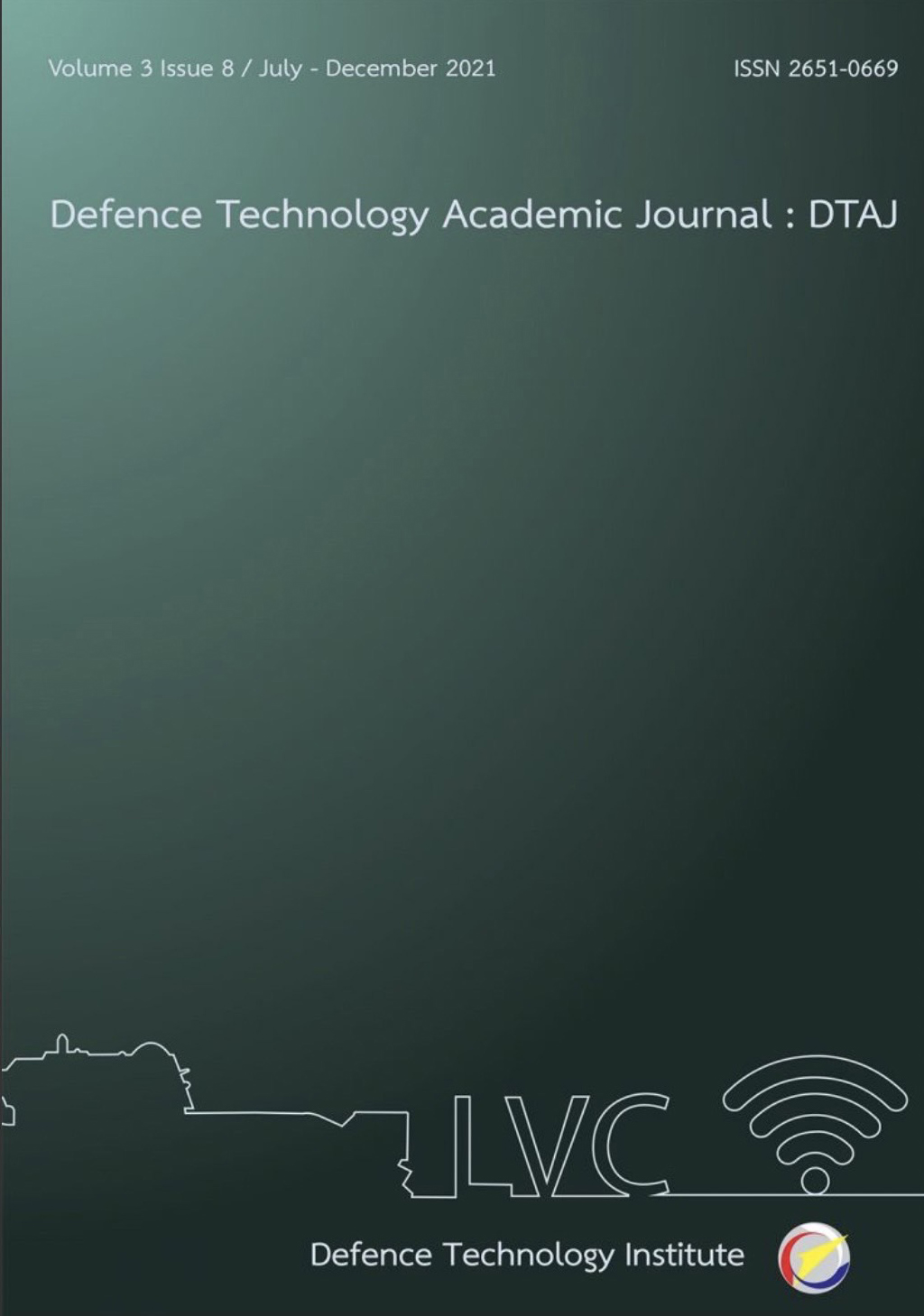Data Analysis and Digital Transformation: The Air-to-Ground Missile and Offensive Weapon Case Study
Main Article Content
Abstract
This report is devoted to data analysis and digital transformation using the Air-to-Ground Missile and Offensive Weapon as a case study. The objective of the study is to understand nature of the data being used, after which data visualization and data analysis can be taken. The database was collected from Jane's Defense archive. From data visualization results, it can be concluded that there are 5 countries that play the main role (Big players) in producing high-technology Air-to-Ground Missile, namely, the US, China, Russia, Israel and Cooperative Project from the European Union countries. Data Visualization revealed offensive weapons were used or developed from large countries, especially those with high level of threats. China, Russia and Pakistan are all surrounded by land threats, hence produced a large number of land-based missiles, while a large number of sea-based ballistic missiles were found to be produced from the USA because of its maritime threats. The correlation of missile’s threat-indicating parameters was shown in scattering plots. The plot of Volume and Weight was found to be more correlated when compared to those from Volume and Range. This implied that Range of a missile depends on many other significant design parameters, e.g. type of propulsion and warhead as well as its initial velocity. After sorting and grouping of all missiles in the world, it was found that the D1G missile from DTI can easily be classified as a “not-so-dangerous missile” for the region. As rocket and missile research and development had set the starting point of DTI in the year BE2552 and hence a gradual decline in military expenses was seen in the graph and the data prediction for year BE2564 was found using “Curve Fitting” method. In order to verify such gradual decline in military expenditure, this was compared to another graph of collection of expenditures of Thai military from Jane’s Defense website. The data was collected for Thailand from BE2553 and classified into various categories. Here, very interesting conclusions were found.
Downloads
Article Details

This work is licensed under a Creative Commons Attribution-NonCommercial-NoDerivatives 4.0 International License.
Journal of TCI is licensed under a Creative Commons Attribution-NonCommercial-NoDerivatives 4.0 International (CC BY-NC-ND 4.0) licence, unless otherwise stated. Please read our Policies page for more information...
References
ราชกิจจานุเบกษา. 2562. พระราชบัญญัติเทคโนโลยีป้องกันประเทศ พ.ศ.2562. เล่ม 136 ตอนที่ 6 ก. หน้า 17 – 38.
ปรีชา ประดับมุข. 2563. ประกาศสถาบันเทคโนโลยีป้องกันประเทศ ที่ 18/2563. เรื่อง การแบ่งส่วนงาน กำหนดหน้าที่ความรับผิดชอบ และกำหนดอำนาจการบังคับบัญชา. จำนวน 27 หน้า.
วศิน ศิวสฤษดิ์. 2564. Data Analysis and Digital Transformation” – เอกสารประกอบการอบรม, หลักสูตร Smart Executive Development Beyond. สถาบันเสริมศึกษาและทรัพยากรมนุษย์. มธ
พีระยุทธ สารตายน. 2563. แนวทางการสร้าง สทป. ให้เป็นศูนย์ความเป็นเลิศทางเทคโนโลยีป้องกันประเทศ - Guidelines for Defence Technology
Excellence Center Development. เอกสารนำเสนอ Process Innovation Project หลักสูตร Smart Supervisor-2. สถาบันเทคโนโลยีป้องกันประเทศ.
Scott Tilley. 2019. Systems Analysis and Design. 12th Edition. Cengage Learning. San Francisco, CA. 576 p.
Juso Jonatan & Hilden Koponen. 2019. Data Visualization Handbook. Aalto-yliopisto, Aalto University. Finland. 352 p.
Paul Kinley. 2016. Data Analytics for Beginners: Basic Guide to Master Data Analytics. CreateSpace Independent Publishing
Platform. Amazon. 86 p.
สาคร เมฆรักษาวนิช. 2563. ระบบฐานข้อมูลเทคโนโลยีป้องกันประเทศ. วารสารวิชาการเทคโนโลยีป้องกันประเทศ. ปีที่ 2 ฉบับที่ 5 พฤษภาคม – สิงหาคม
หน้า 4 – 15.
Valérie Lavigne & Denis Gouin. 2011. Applicability of Visual Analytics to Defence and Security Operations. 16th Research and Technology Symposium International Command and Control “Collective C2 in Multinational Civil-Military Operations” (ICCRTS 2011), Quebec Canada, June 21-23.


